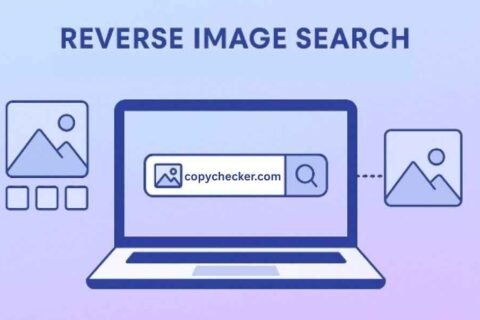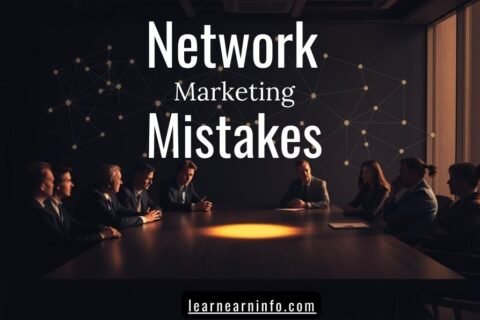Business development strategy plan,In today’s fast-paced business landscape, the path to success is not always straightforward. But what if I told you that with the right strategies and a relentless drive, you can turn your entrepreneurial dreams into a thriving reality? In this comprehensive guide, I will share my insights on how to grow a successful business, covering effective business strategies, marketing tactics, financial management, customer acquisition, scaling operations, and leadership skills that can help you achieve a competitive advantage and sustainable growth.
Have you ever wondered what separates the businesses that soar from those that struggle?
The answer lies in a deep understanding of the key drivers of business success. Whether you’re a budding entrepreneur or an experienced business owner, the strategies outlined in this article will provide you with a roadmap to take your business to new heights. So, are you ready to embark on a journey of growth and unlock the full potential of your enterprise?
Key Takeaways
- Discover effective business strategies to drive sustainable growth.
- Master marketing tactics to attract and retain loyal customers.
- Implement sound financial management practices to fuel business expansion.
- Develop leadership skills to build a strong, motivated team.
- Use creative methods to obtain a competitive advantage.
-
Establishing a Solid Business Plan
Building a solid business plan is the foundation for a successful business. In this section, I’ll guide you through the process of defining clear business goals, conducting thorough market research, and developing a comprehensive financial roadmap. By establishing a well-thought-out plan, you’ll be able to make informed decisions, allocate resources effectively, and set your business on a path to sustainable growth.
Defining Your Business Goals
Crafting a clear and concise set of business goals is the first step in creating a robust business plan. These goals should be specific, measurable, achievable, relevant, and time-bound (SMART) to ensure that you’re working towards a well-defined vision for your business. Whether your focus is on scalable business models, financial planning, or operational efficiency, defining your objectives will provide you with a roadmap to guide your decision-making and track your progress.
Conducting Market Research
Thorough market research is essential for understanding your target audience, identifying industry trends, and evaluating your competition. By gathering data on customer needs, pain points, and purchasing behaviors, you can develop a deep understanding of the entrepreneurial mindset and preferences of your target market. This knowledge will inform your business strategy and help you create products or services that truly resonate with your customers.
Business Development Plans
Crafting a comprehensive financial roadmap is a critical component of your business plan. This includes projecting your start-up costs, estimating ongoing expenses, and forecasting revenue streams. By developing a detailed financial plan, you’ll be able to identify potential funding options, manage your cash flow, and make informed decisions about resource allocation. A well-thought-out financial roadmap will provide you with the financial stability and confidence to drive your business forward.
Business development strategy plan
| Key Elements of a Solid Business Plan |
Description |
|
Business Goals |
Clearly defined, measurable objectives that align with your entrepreneurial mindset and vision for the business. |
|
Market Research |
Comprehensive analysis of your target market, industry trends, and competitive landscape to inform your business strategy. |
|
Financial Roadmap |
Detailed projections of start-up costs, ongoing expenses, and revenue streams to ensure financial planning and operational efficiency. |
Building a Strong Brand Identity
A strong brand identity is the cornerstone of a prosperous company. By crafting a compelling brand message and designing a memorable visual identity, you can differentiate your company, foster customer loyalty, and leave a lasting impression on your target audience.
Crafting a Compelling Brand Message
Your brand message is the heart of your business, conveying your unique value proposition and resonating with the needs and aspirations of your customers. Invest time in developing a clear, authentic, and emotionally-driven brand message that aligns with your company’s mission, values, and personality. This will help you establish a strong brand identity and build a genuine connection with your audience.
Designing a Memorable Logo and Visual Identity
Your logo and visual identity are the visual representations of your brand, serving as the first touchpoint for your customers. Craft a distinctive logo that is visually striking and instantly recognizable, and develop a cohesive visual identity system that includes consistent typography, color palette, and design elements. By investing in a well-designed brand identity, you’ll create a strong, memorable impression that sets you apart from the competition and helps you build brand loyalty.
Mastering Effective Marketing Strategies
Effective marketing is the key to driving sustainable business growth. In this section, I’ll explore a range of digital and traditional marketing strategies that can help you attract and retain customers, ultimately fueling the expansion of your enterprise.
Leveraging Digital Marketing Channels
The digital landscape has revolutionized the way businesses connect with their target audience. By leveraging the power of social media, search engine optimization (SEO), and targeted digital advertising, you can amplify your brand’s visibility, engage with potential customers, and implement effective customer acquisition techniques. From creating captivating social media content to optimizing your website for search engines, I’ll provide you with a comprehensive toolkit to excel in the digital realm.
Implementing Traditional Marketing Tactics
While digital marketing has taken the forefront, traditional marketing tactics still hold immense value. By strategically incorporating methods such as print advertising, direct mail campaigns, events, and public relations, you can reach a wider audience, build brand recognition, and establish a well-rounded marketing approach. I’ll share best practices for integrating these time-tested techniques with your digital marketing efforts, ensuring a cohesive and impactful marketing strategy.
Customer Loyalty
Acquiring new customers is essential, but retaining your existing customer base is equally crucial for long-term business success. I’ll delve into strategies for cultivating customer loyalty, including personalized communication, loyalty programs, and exceptional customer service. By fostering strong relationships with your customers and providing them with a memorable brand experience, you can increase customer retention, boost referrals, and drive sustained growth for your business.
Strategies To Grow a Business
Growing a successful business requires a multifaceted approach that encompasses strategic planning, adaptability, and relentless effort. In this section, I’ll delve into the key factors that contribute to business growth, including the development of scalable business models, the implementation of effective growth strategies, and the optimization of small business management practices. By focusing on these critical elements, you’ll be able to position your business for sustainable growth and expansion.
Developing a scalable business model is essential for achieving long-term success. This involves creating systems and processes that can accommodate and adapt to the increasing demands of a growing customer base. By designing a scalable infrastructure, you’ll be able to efficiently manage your operations, streamline workflows, and capitalize on new opportunities as they arise.
Alongside scalability, implementing effective business growth strategies is crucial for driving your company’s success. This may include diversifying your product or service offerings, expanding into new markets, or leveraging strategic partnerships to access new customer segments. By continuously exploring ways to expand your reach and capture a larger share of your target market, you’ll be well-positioned to grow your successful business.
Optimizing your small business management practices is also integral to sustaining growth. This encompasses everything from financial management and resource allocation to talent development and operational efficiency. By refining your management approaches, you can ensure that your business remains agile, responsive, and well-equipped to navigate the challenges and opportunities that come with scaling your operations.
Fostering a Positive Company Culture
A positive company culture is a powerful driver of business success. By cultivating a supportive and collaborative work environment, you can unlock the full potential of your team and create a foundation for long-term growth. In this section, I’ll explore strategies for building a thriving company culture, including the importance of talent management and techniques for encouraging employee engagement and motivation.
Hiring and Retaining Top Talent
Attracting and retaining top talent is essential for fostering a positive company culture. Invest in robust talent management practices that prioritize identifying, recruiting, and developing high-performing individuals who align with your organization’s values and goals. Offer competitive compensation, opportunities for leadership development, and a nurturing work environment to ensure your best employees stay motivated and engaged.
Encouraging Employee Engagement and Motivation
Cultivating a high level of employee engagement is crucial for maintaining a positive company culture. Implement strategies that empower your team, such as providing clear communication, offering regular feedback, and encouraging collaborative decision-making. Foster an environment that values work-life balance, recognizes achievements, and supports professional growth. When your employees feel invested in the company’s success, they’ll be more likely to contribute to a thriving, company culture.
| Key Strategies for Fostering a Positive Company Culture | Benefits |
|---|---|
| Prioritize talent management and hiring top talent | Builds a strong, capable team aligned with your company’s vision |
| Encourage employee engagement and motivation | Boosts morale, productivity, and employee retention |
| Provide opportunities for leadership development | Cultivates a deep bench of talented leaders to drive growth |
| Foster a collaborative, supportive work environment | Promotes creativity, innovation, and a sense of community |
Embracing Innovation and Adaptability
In today’s rapidly changing business landscape, the ability to innovate and adapt is crucial for achieving sustainable growth. By embracing a culture of innovation, you can position your business to respond swiftly to shifting market demands and capitalize on emerging opportunities.
One effective strategy is to incorporate growth hacking techniques into your business model. This approach combines data-driven experimentation, agile development, and a relentless focus on user acquisition and retention. By constantly testing and iterating on your marketing and product strategies, you can uncover innovative ways to drive scalable business growth.
Fostering a culture of adaptability is also key. Encourage your team to adopt a growth mindset, where they are empowered to challenge assumptions, explore new ideas, and pivot quickly in response to market changes. Provide the necessary resources, training, and support to enable your employees to embrace innovation and drive meaningful progress.
Building scalable business models that can adapt to evolving conditions is another critical aspect of sustainable growth. Continuously assess your products, services, and operational processes, and be willing to make the necessary adjustments to remain competitive and relevant. By maintaining a flexible and innovative approach, you’ll be better equipped to navigate challenges and capitalize on emerging opportunities.
Optimizing Operations for Efficiency
Achieving operational efficiency is a vital component of sustainable business growth. By streamlining your processes and leveraging the power of technology and automation, you can unlock new levels of productivity, reduce costs, and enhance the overall performance of your organization.
Streamlining Processes
To optimize your business operations, start by carefully examining your existing workflows and identifying areas for improvement. Seek to automate monotonous work, remove duplication, and streamline intricate processes. Implement lean management principles, such as process mapping and continuous improvement, to enhance the efficiency of your day-to-day operations.
Technology and Automation
Accept the role that technology plays in enhancing operational effectiveness. Invest in software solutions, cloud-based platforms, and intelligent automation tools that can streamline your workflows, improve data management, and enhance decision-making. Automation can help you reduce manual effort, minimize errors, and free up your team to focus on more strategic tasks that drive business growth.
| Technology Solutions | Benefits |
|---|---|
| Enterprise Resource Planning (ERP) Systems | Streamlined operations, improved data integration, and enhanced decision-making |
| Customer Relationship Management (CRM) Software | Improved customer service, increased sales efficiency, and enhanced client retention |
| Robotic Process Automation (RPA) | Automated repetitive tasks, reduced errors, and increased productivity |
| Workflow Management Systems | Optimized business processes, improved collaboration, and enhanced visibility |
By implementing these strategies and harnessing the power of technology and automation, you can drive operational efficiency, reduce costs, and position your business for long-term growth and success.
Effective Financial Management
Effective money management is crucial to your company’s long-term success. In this section, I’ll provide insights on effective budgeting and cost control strategies, techniques for optimizing cash flow, and guidance on exploring various financing options to fuel your business growth. By mastering these financial management practices, you’ll be better equipped to make informed decisions, manage risk, and secure the resources necessary to expand your business.
Budgeting and Cost Control
Developing and adhering to a well-crafted budget is a critical component of effective financial management. I’ll share strategies for creating a comprehensive budget that aligns with your business goals and objectives, allowing you to monitor expenses, identify areas for cost savings, and make informed decisions about resource allocation. By implementing robust cost control measures, you can optimize your operations, increase profitability, and reinvest in the growth of your business.
Cash Flow Management
Maintaining a healthy cash flow is essential for the sustainability and growth of your business. I’ll explore techniques for effectively managing your cash flow, including invoicing practices, inventory management, and accounts receivable and payable optimization. By implementing these cash flow management strategies, you’ll be able to ensure that your business has the necessary liquidity to meet financial obligations, seize opportunities, and navigate unexpected challenges.
Exploring Financing Options
To fuel the growth of your business, you may need to explore various financing options. I’ll provide an overview of the different financing avenues available, such as traditional bank loans, alternative lending platforms, and equity financing. I’ll also discuss the key considerations and requirements for each option, empowering you to make informed decisions about the best financing solution for your business’s unique needs and growth aspirations.
FAQ
What are the key elements of a successful business plan?
A successful business plan should include clearly defined business goals, thorough market research, and a comprehensive financial roadmap. This will provide a solid foundation for your business and guide your decision-making process.
How can I build a strong brand identity for my business?
To build a strong brand identity, you should focus on crafting a compelling brand message that resonates with your target audience, and designing a memorable logo and visual identity that sets you apart from the competition.
Which marketing techniques work best for expanding my business?
Effective marketing strategies for growing your business include leveraging digital marketing channels like social media and SEO, implementing traditional marketing tactics, and cultivating customer loyalty through personalized experiences.
What are the key factors for achieving sustainable business growth?
Achieving sustainable business growth requires a multifaceted approach, including the development of scalable business models, the implementation of effective growth strategies, and the optimization of small business management practices.
How can I build a positive company culture that drives business success?
To build a positive company culture, focus on hiring and retaining top talent, encouraging employee engagement and motivation, and fostering a supportive and collaborative work environment.
Why is it important to embrace innovation and adaptability in business?
Embracing innovation and adaptability is crucial for navigating the rapidly changing business landscape. By incorporating growth hacking techniques, fostering a culture of innovation, and building scalable business models, you can better respond to shifting market conditions and capitalize on emerging opportunities.
How can I optimize my business operations for greater efficiency?
To optimize your business operations for greater efficiency, focus on streamlining your processes, leveraging technology and automation, and implementing best practices for operational excellence. This can help you free up resources, reduce costs, and enhance the overall productivity of your business.
What are the key aspects of effective financial management for my business?
Effective financial management for your business should include strategies for budgeting and cost control, optimizing cash flow, and exploring financing options to fuel your growth. By mastering these financial management practices, you’ll be better equipped to make informed decisions and secure the resources necessary to expand your business.



















